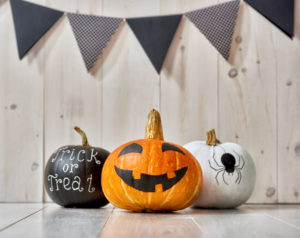
Halloween is a spooky holiday with lots of creepy and fun traditions. For children, it means putting on fun costumes and heading out to ring doorbells and collect candy from neighbors and relatives. Adults also celebrate Halloween, attending all kinds of parties and finding clever costumes to showcase in front of friends. Despite the fact that people of all ages celebrate Halloween in America, there are many traditions that do not get a second glance. You might think it is normal to carve a pumpkin into a face for this holiday, but you probably don’t wonder why.
If you are curious about how some of the more common Halloween traditions began, then this information is for you. Check out these origin stories and learn a bit about what has helped to make Halloween the spooky, ghoulish event that it has become.
From Turnips to Pumpkins
The jack-o’-lantern is one of the easiest images to associate with Halloween. When October 31st is on the horizon, people head to a local pumpkin patch to find the biggest prize. Once home, they take a knife and begin to scoop out the innards of the gourd, hollowing it out and creating a face in the front of the pumpkin. The face is illuminated by placing a candle or other light source into the creation. A spooky sight, for sure. Still, pumpkins were not always the top choice for this tradition.
The idea of the jack-o’-lantern began in Ireland with the fable of Stingy Jack. According to lore, Stingy Jack was a miserable trickster who was barred from both heaven and hell upon his death. When speaking with the devil, Jack discovered he had a turnip in his pocket. With nowhere to go, Jack carved the turnip into a lantern and wandered the world searching for a final resting place. The Irish soon carved turnips into lanterns to honor Stingy Jack. When massive waves of Irish immigrants came to America and discovered pumpkins, turnips were swapped out.
Feeling Batty
Some traditions and images come from a practical place. This is especially true in the case of why bats are associated with Halloween. Sure, bats are creepy mammals, but they are nothing truly terrifying when compared to other critters out there. Historians believe that bats became associated with this holiday in ancient times when Celts in Ireland would gather around fires to swap tales of terror. While sitting by the fire, bugs were most likely attracted to the glow of the embers and the exposed skin of the human beings sitting around.
These insects were thought to have attracted bats, who feast upon most insects. While Celts of this time would most likely already be familiar with the bats and what they were, their presence probably helped to fuel additional stories by the fire. Eventually, the idea of the bat would transform even more when it would become associated with vampires, another Halloween staple.
Post-War Sweets
Halloween has ebbed and flowed a great deal over the centuries in regards to popularity. In fact, Halloween did not see the level of popularity that it knows today in America until the 1950s. After the end of World War II, the idea of the nuclear family became quite popular. This led people to take comfort in “wholesome” traditions that helped to boost the economy. Candy companies took the idea of trick-or-treating, which usually involved handing out coins and fruits, and began marketing candy at consumers to hand out to children on Halloween night instead.
Though Halloween might be one of the oldest traditions celebrated across the world, it has changed a great deal over the years. Exploring the origins of some of these traditions can help you to find new appreciation for the celebration and maybe even create some spooky rituals of your own.

